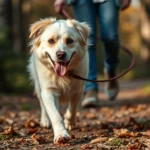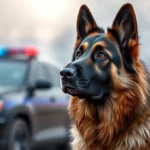
Introduction
The Cavalier King Charles Spaniel is a charming and affectionate breed known for its gentle demeanor and loving nature. These small dogs, typically weighing between 13 to 18 pounds, possess striking physical traits, including their beautiful silky coats and expressive eyes. Their affectionate and eager-to-please personality makes them wonderful companions, but it also underscores the importance of effective training. Training your Cavalier is essential not only for fostering good behavior but also for enhancing your bond with this delightful breed.
In this comprehensive guide, you will learn about the unique characteristics of the Cavalier King Charles Spaniel, the significance of training, effective techniques, essential commands, socialization, addressing behavioral issues, and maintaining training progress.
Understanding the Cavalier King Charles Spaniel
Breed Characteristics
Cavalier King Charles Spaniels are small, elegant dogs with a friendly disposition. They typically stand around 12 to 13 inches tall and are known for their beautiful, long ears and expressive facial features. Their coats come in various colors, including Blenheim (chestnut and white), tricolor (black, white, and tan), ruby (solid red), and black and tan.
Personality-wise, Cavaliers are affectionate, sociable, and eager to please, making them excellent family pets and companions. Their friendly nature often leads them to get along well with children, other dogs, and even strangers. However, their affectionate disposition can sometimes lead to challenges, such as separation anxiety, which requires careful attention during training.
Common Behavioral Traits
Cavaliers are playful and love to engage with their families. They enjoy being part of daily activities and thrive on companionship. However, their sociable nature means they can become overly attached to their owners, leading to potential behavioral challenges.
Common issues include:
- Separation anxiety: Cavaliers often struggle when left alone for extended periods.
- Stubbornness: While eager to please, they can sometimes display a willful side, making training consistency crucial.
- Barking: Their alertness can lead to excessive barking if not addressed.
Understanding these traits is the first step in learning how to train a Cavalier King Charles Spaniel effectively.
The Importance of Training
Benefits of Training Your Cavalier King Charles Spaniel
Training your Cavalier King Charles Spaniel offers numerous benefits that extend beyond basic obedience. Some key advantages include:
- Strengthening the bond: Training builds trust and communication between you and your dog, enhancing your relationship.
- Enhancing socialization: Proper training helps your Cavalier develop positive interactions with other dogs and people, reducing anxiety and fear.
- Reducing behavioral issues: Training can mitigate common problems such as barking, chewing, or separation anxiety, leading to a more harmonious home environment.
When to Start Training
The ideal age to start training your Cavalier King Charles Spaniel is as early as 8 weeks. Early socialization is crucial, as puppies are most receptive to learning during their formative months. Introducing them to various environments, sounds, and experiences can help them grow into well-adjusted adults.
If you adopt an adult Cavalier, it’s never too late to start training. Patience and consistency are key, but early training typically yields the best results.
Basic Training Techniques
Positive Reinforcement
One of the most effective methods for training your Cavalier King Charles Spaniel is through positive reinforcement. This technique involves rewarding desirable behaviors rather than punishing undesired ones. Rewards can include treats, praise, or playtime. This approach not only encourages good behavior but also fosters a positive training experience for both you and your Cavalier.
For example, when your dog successfully follows a command, immediately offer a treat or verbal praise. This reinforces the behavior, making it more likely to occur again.
Consistency and Patience
Consistency is vital when training your Cavalier. Use the same commands and gestures each time you train, and establish a routine that your dog can understand. This clarity helps your dog learn faster and reduces confusion.
Training requires patience. Dogs, including Cavaliers, may not grasp commands immediately. If your dog struggles with a command, take a step back and try different techniques or break the command into smaller steps. Staying calm and encouraging will create a more effective learning environment.
Essential Commands to Teach
Sit
Teaching your Cavalier to “sit” is one of the first commands you should master. Here’s how to do it:
- Get your dog’s attention: Hold a treat close to your dog’s nose.
- Move the treat: Slowly move your hand up, allowing your dog’s head to follow the treat. This motion will naturally cause their bottom to lower.
- Say “sit”: As soon as your dog’s bottom touches the ground, say “sit” and give them the treat.
- Repeat: Practice this several times a day until your dog understands the command.
Common Mistakes: Avoid pushing your dog down into a sitting position, as this can create confusion and frustration. Always use a gentle approach.
Stay
The “stay” command is essential for keeping your dog safe and preventing unwanted behaviors. Here’s how to teach it:
- Start in a quiet environment: Have your Cavalier sit first.
- Open your palm: Show your dog your palm and say “stay.”
- Take a step back: If your dog stays, praise them and reward. If they move, gently guide them back to the original position.
- Gradually increase distance: As your dog becomes more comfortable with the command, increase the distance and duration.
Duration and Distance Tips: Start with short distances and brief durations. Gradually increase both as your dog becomes more reliable with the stay command.
Come
The “come” command is vital for your dog’s safety, especially when off-leash. Here’s how to train it:
- Use a leash: Start with your dog on a leash in a safe area.
- Call your dog: Use a cheerful tone to say “come” while gently pulling the leash towards you.
- Reward: When your dog comes to you, reward them with a treat and praise.
- Practice off-leash: Once your dog reliably comes on leash, practice in a secure, fenced area without the leash.
Techniques for Effective Training: Use high-value treats and create positive associations with the command by rewarding frequently in the early stages.
Leash Training
Teaching your Cavalier proper leash manners is crucial for enjoyable walks. Here are some strategies:
- Choose the right equipment: Use a comfortable collar or harness that fits well.
- Start indoors: Begin leash training in a distraction-free environment.
- Use treats: Encourage your dog to walk beside you by rewarding them for staying close.
- Address pulling: If your Cavalier pulls, stop walking and wait until they return to your side before continuing.
Tips for Dealing with Distractions: Practice in various environments, gradually increasing distractions to build your dog’s focus and confidence.
Socialization
Importance of Socialization
Socialization is crucial for your Cavalier King Charles Spaniel to develop into a well-adjusted adult. Exposing them to different people, dogs, environments, and experiences can prevent behavioral issues such as fear or aggression. A well-socialized dog is typically happier and more confident.
Socialization Techniques
To ensure your Cavalier receives proper socialization, consider the following techniques:
- Gradual introductions: Slowly expose your dog to new experiences, ensuring they are positive.
- Puppy classes: Enroll in puppy classes where they can interact with other dogs and people.
- Playdates: Arrange playdates with other well-mannered dogs to promote positive interactions.
Addressing Behavioral Issues
Common Behavioral Problems
Cavalier King Charles Spaniels can exhibit several behavioral challenges, including:
- Separation anxiety: Cavaliers often become distressed when left alone, leading to destructive behaviors.
- Barking excessively: Their alert nature can result in unnecessary barking.
- Chewing and destructive behavior: Boredom or lack of appropriate outlets can lead to chewing on furniture or shoes.
Solutions and Training Tips
Addressing these issues requires tailored solutions:
- Separation anxiety: Gradually increase the time your dog spends alone to help them adjust. Provide engaging toys to keep them occupied.
- Barking: Identify triggers for barking and desensitize your dog to them. Reward quiet behavior and redirect excessive barking.
- Destructive behavior: Ensure your dog receives enough physical and mental stimulation through regular exercise and engaging toys.
If behavioral problems persist or worsen, consider seeking help from a professional dog trainer or behaviorist.
Advanced Training and Activities
Tricks and Fun Commands
Once your Cavalier has mastered the basics, teaching fun tricks can keep training engaging. Consider teaching commands like “roll over,” “play dead,” or “spin.” These tricks not only entertain but also reinforce the bond between you and your dog.
Dog Sports and Activities
Engaging in dog sports can provide both physical and mental stimulation for your Cavalier. Activities such as agility, obedience, and even therapy dog training can enrich their lives. These activities foster teamwork and strengthen your bond while keeping your dog active and healthy.
Maintaining Training Progress
Regular Practice and Reinforcement
Regular practice is vital for maintaining your Cavalier’s training. Incorporate training sessions into your daily routine, even if it’s just for a few minutes. This ongoing reinforcement helps solidify learned commands and ensures your dog stays sharp.
Evaluating Progress
Periodically assess your dog’s training progress. Observe their responses to commands and adjust your training methods as necessary. If your dog struggles with a specific command, consider breaking it down further or revisiting previous lessons.
Conclusion
Training your Cavalier King Charles Spaniel is a rewarding journey that enhances your bond and enriches your dog’s life. Understanding their unique characteristics, employing effective training techniques, and ensuring proper socialization are fundamental to raising a well-behaved companion. Start training as soon as possible, be patient, and enjoy the process of learning together. A well-trained Cavalier brings joy, companionship, and harmony to your home.
By investing time and effort into training, you will foster a loving, well-adjusted Cavalier King Charles Spaniel that thrives in your family.









